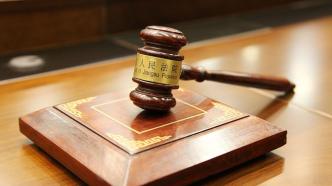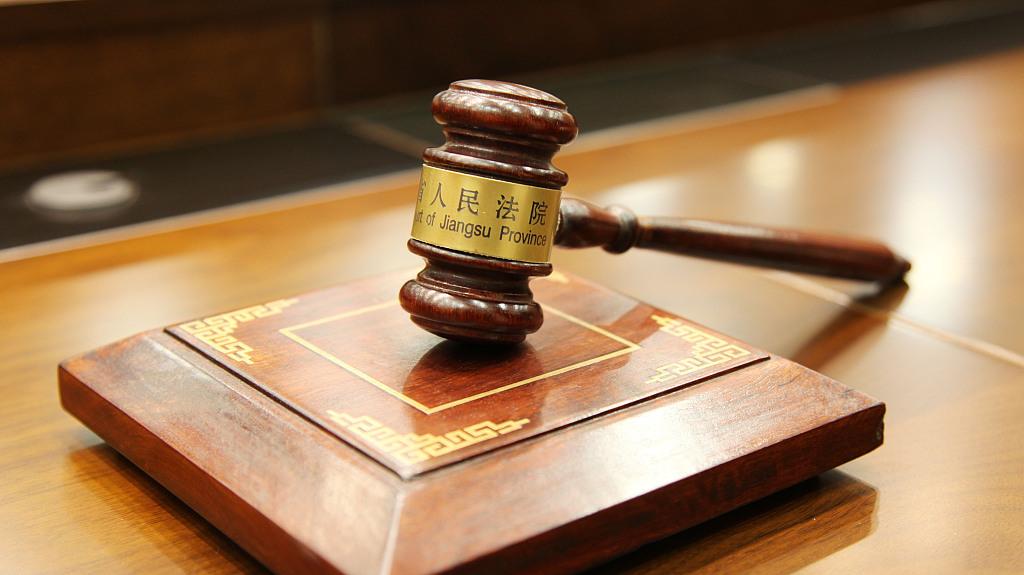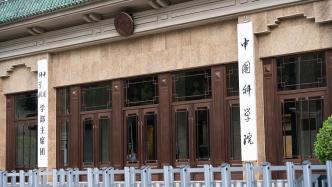

The case of Chen Fahu, academician of the Chinese Academy of Sciences, chairman of the Chinese Geographical Society, and director of the Qinghai-Tibet Plateau Research Institute of the Chinese Academy of Sciences, v. Wu Qinglong for the dispute over network tort liability will be heard in the Beijing Internet Court.
On the afternoon of February 20, The Paper (www.thepaper.cn) learned from the Beijing Internet Court that the 60-year-old academician of the Chinese Academy of Sciences, the chairman of the Chinese Geographical Society, and the director of the Qinghai-Tibet Plateau Institute of the Chinese Academy of Sciences Chen Fahu sued the 49-year-old Yuan The online tort liability dispute case of Wu Qinglong, a postdoctoral fellow at Peking University School of Archeology and Museology, was originally scheduled to be held online on February 23. Because the defendant submitted an application for "postponing the hearing" and "offline hearing", the date will be rescheduled and the hearing will be postponed.
Wu Qinglong previously posted an article on the Internet questioning that an archaeological research paper published by Academician Chen Fahu in the top international academic journal Science (Science) did not show archaeological stratigraphic evidence. Academician Chen Fahu announced the archaeological evidence of the study.
According to the indictment, academician Chen Fahu sued that the defendant, without any evidence to prove that the plaintiff was suspected of academic misconduct, still "forced mass emails" to members of the Chinese Academy of Sciences System Science Ethics Construction Committee and related experts, and successively published many articles with real names on the Internet Articles, etc., continue to maliciously slander the plaintiff for "intentional fraud", "behind-the-scenes operation", "abusing power", "deceiving collaborators", etc.; and insulting the plaintiff with "falsified speculators", which seriously disrupted the academic discussion in the industry order, and had a serious adverse effect on the normal work of the plaintiff.
Academician Chen Fahu's lawsuit requests include: ordering the defendant to compensate the plaintiff for 50,000 yuan in compensation for mental damage, and to bear related rights protection and litigation costs; ordering the defendant to post an apology statement of no less than 1,000 words on the account of each platform involved in the case for 30 consecutive days , to restore the plaintiff's reputation.
The science paper written by the vice president of Lanzhou University at the time: 3,600 years ago, humans settled permanently on the Qinghai-Tibet Plateau
The title of the paper involved is "Agriculture facilitated permanent human occupation of the Tibetan Plateau after 3600 BP" (Agriculture facilitated permanent human occupation of the Tibetan Plateau after 3600 BP), published online on November 20, 2014 in top international academic journals In Science. Its official release date is January 16, 2015.
On November 30, 2014, China's government website quoted Xinhua News Agency's "Chinese Scientists Reveal Reasons for Human Settlement on the Qinghai-Tibet Plateau" as saying that "a research team led by Chen Fahu, Dong Guanghui, Zhang Dongju, etc. has studied the 200-year-old northeastern part of the Qinghai-Tibet Plateau since 2008. The rest of the prehistoric sites were investigated, and 53 Neolithic bronze cultural sites that were well preserved in the archaeological strata were selected to carry out the analysis of animal and plant remains... Based on the newly obtained data and combined with published research results in related fields, the study The team found that the activities of prehistoric humans on the Qinghai-Tibet Plateau went through a long process of adaptation from short-term seasonal hunting to large-scale permanent settlement. The large-scale dispersal of ancient humans to the Qinghai-Tibet Plateau occurred after 3600 years ago, mainly barley The wheat farming provided humans with a long-term source of food at that time... Chen Fahu said that in the past, the academic circles generally believed that warm and suitable climate conditions were the main factors that prompted prehistoric humans to permanently settle on the Qinghai-Tibet Plateau, but prehistoric humans were precisely in the context of global climate cooling Agricultural technology innovation played the most critical role in the large-scale expansion to the high-altitude areas of the Qinghai-Tibet Plateau.
Chen Fahu, the first author of the paper, is also one of the corresponding authors of the paper. Chen Fahu was the vice president of Lanzhou University at that time, and he was a professor of the School of Resources and Environment of Lanzhou University.
One year later, on December 7, 2015, the list of elected academicians of the Chinese Academy of Sciences was announced. Chen Fahu, who majored in environmental change at Lanzhou University, was one of the ten newly elected academicians of the Department of Earth Sciences. In 2016, Chen Fahu was elected as an academician of the Academy of Sciences of the Developing World (TWAS).
Another corresponding author of the paper involved is Dong Guanghui. The two signed units are both the Key Laboratory of Western Environmental Education Department of Lanzhou University.
According to the official website of the Key Laboratory of Western Environmental Education Department of Lanzhou University, Chen Fahu is a Ph. He is currently the director of the Qinghai-Tibet Plateau Institute of the Chinese Academy of Sciences, the chairman of the Chinese Geographical Society, the deputy editor-in-chief of "Science in China: Earth Science", and the executive editor-in-chief of "Science Bulletin".
Dong Guanghui is currently a professor of the School of Resources and Environment, Lanzhou University, and has been funded by the National Natural Science Foundation of China Outstanding Youth Fund Project "Environmental Archeology and Environmental Change".
On August 5, 2016, Wu Qinglong, as the corresponding author, published a research paper in the journal "Science", titled "The Outbreak Flood in 1920 BC Supports the Great Flood and the Existence of the Xia Dynasty in Chinese Legends" ( Outburst flood at 1920 BCE supports history of China's Great Flood and the Xia dynasty). Its first signature unit is the School of Archeology and Museology of Peking University.
Science papers were publicly questioned by real names: please publish their archaeological evidence
The title of one of the Internet articles published by Wu Qinglong’s real name mentioned in the aforementioned complaint is “Academician Chen Fahu, please publish the archaeological evidence of your Science paper in January 2015, and accept the supervision of the academic community and the public on your scientific research integrity” , and the signing date is December 17, 2022. However, the online article was subsequently complained and deleted.
The online article said, “After the paper (reporter’s note: Academician Chen Fahu’s paper in the journal Science) was published online, you announced to Xinhua News Agency and other media that you selected 53 ruins with complete strata for research (http://www. gov.cn/xinwen/2014-11/30/content_2784867.htm )...But you did not publish any archaeological evidence of any site in the main body and supplementary part of your paper, which is a very strange phenomenon At that time, an archaeologist who was very familiar with your research area once said: 'This study is very meaningful. A lot of plant archaeological research and carbon 14 dating have been done, but unfortunately there is no stratigraphy'. "
"In 2020, I found that the conclusion of your thesis was completely wrong, and then speculated that there was a certain possibility of manipulating and falsifying evidence in your thesis. Later investigations and research further confirmed that the conclusion of the paper was wrong, and increased the The paper is suspected of being manipulated and falsified.”
The above-mentioned online article stated, “Since May 2021, in order to rule out the possibility of manipulating evidence and falsifying evidence in this paper, I have written several mass emails to Lanzhou University and the Ethics Committee of the Chinese Academy of Sciences, requesting and urging you to disclose the archaeological records of 53 sites in this paper. Stratigraphic evidence, I have repeatedly asked you and Dong Guanghui to release archaeological evidence, but you have always refused."
The above-mentioned online article appended three important archaeological papers published by other Chinese scholars, and cited the relevant archaeological evidence presented in these papers as examples, and said, "Please give due consideration when preparing the archaeological evidence for your paper. refer to".
Examples of papers and their archaeostratigraphic evidence cited in the web article above include:
1. In the 2012 Science journal paper by the team of Professor Wu Xiaohong from the School of Archeology and Museology of Peking University on the study of pottery in Xianrendong 20,000 years ago, Fig. 3 provides a line drawing of the east section of the Xianrendong archaeological site, and marked The collection location of the experimental sample;
2. The team of Gao Xing, a researcher at the Institute of Vertebrate Paleontology and Paleoanthropology, Chinese Academy of Sciences, also provided archaeological evidence in the journal Science in 2018. They used pictures to show the geographical location of the site, the archaeological pits of the site, and the sequence division of sedimentary strata, and marked the collection locations of most experimental samples on the section photos on the east side of the archaeological pits;
3. The 2020 Science journal papers by the team of Professor Zhang Dongju of Lanzhou University also provide stratigraphic evidence of archaeological sites in the main text or supplementary materials. Among them, the main text Fig.2 shows the stratigraphic histogram of the archaeological site, and marks the collection location of the experimental samples; the supplementary material Fig.S2 is a photo of the section strata in the archaeological pit, and marks the stratum levels; the supplementary material Fig. .S3 provides a cross-sectional view and marks the collection locations of relevant experimental samples.

